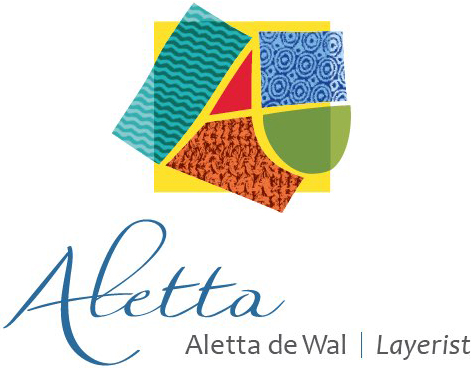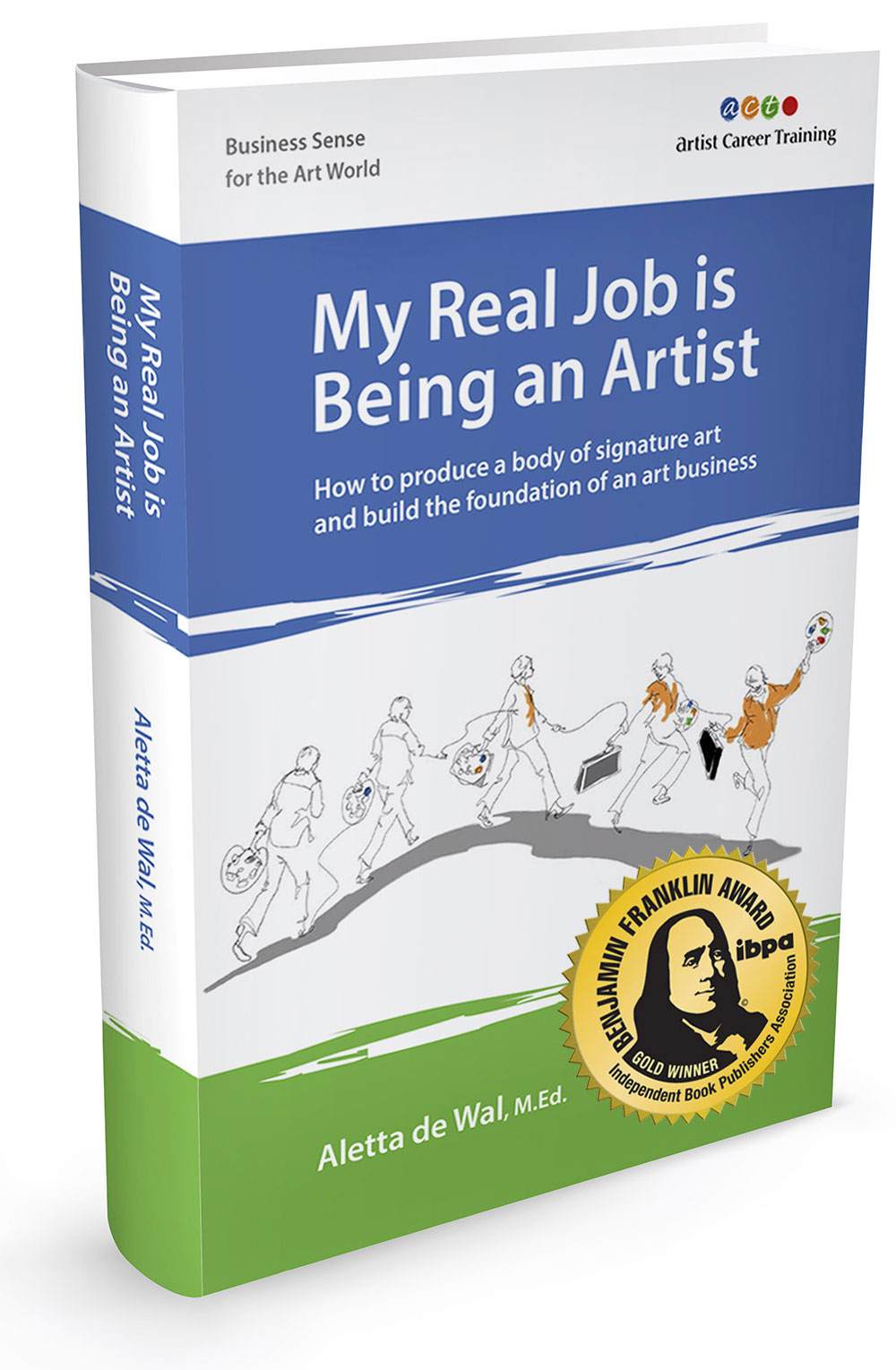Painter Thom Reaves Creates “Lighthearted imagery of joy"
From Bipolar Disorder to Poster Style Paintings of Joy
There is often additional information on the recording that is not in this written interview. Inspire yourself and listen while you make art.
My primary goal in these interviews is to inspire you with stories of people who make a living making art and who consider it a "real job." Your art and your career may be on a different path, but there is always something to learn from the experience of your colleagues.
 Thom Reaves www.thomreaves.com
Thom Reaves www.thomreaves.com
Thom Reaves discovered his love for creating by making paper dolls and folded paper trucks. When young Thom would go on long rides with his father, he became fascinated with the graphics on gas station signs and road maps, which seeded the inspirations of his later artistic life. Signs, symbols and billboards birthed an interest in graphics and posters, which have become the signature style of his work.
Thom majored in graphic design, receiving his bachelor’s degree in communications design from Pratt Institute in 1988. After working for a number of years as a neon sign designer in New York, he returned to his hometown of Trenton, NJ. There he began to produce his art, initially expressing himself through intricate pen & ink drawings. When a gallerist suggested the introduction of color into his work, Thom began painting. The new focus on color reignited his love of vintage posters, a visual style which he then chose as the avenue of his self-expression. Uplifting imagery became the framework of a long-running series of works based on play with words, locations and objects.
Thom has flourished in the continuation of his stylized poster like images, earning him the privilege of showing his work in numerous group and solo shows. His designs have graced the surfaces of fine writing instruments and luxury items for Acme Studios of Hawaii, sold in boutiques around the world and his work is licensed for art reproductions. Thom was also a featured artist, painting an entire room of an Art hotel in Miami Beach, FL. and he collaborated with a trendy home design company, lending his images to fashion accessories. Thom creates works for numerous commissions and portraits, having produced artwork for homes and businesses in the US and Japan. In addition to his painting, Thom writes children’s stories and has written and produced an episodic, web-based drama.
 Copyright 2014 Thom Reaves, Coeur (3). 24 inches x 18 inches. Acrylic on canvas. Photo credit, Andrew Wilkinson
Copyright 2014 Thom Reaves, Coeur (3). 24 inches x 18 inches. Acrylic on canvas. Photo credit, Andrew Wilkinson
A.C.T.: What prompted you to start your professional art career? What makes an artist professional?
I think it was in my genes. I always knew I would be an artist when I grew up. I went to school for design in NYC, but it was only after I moved out of the city back to my hometown that I started painting. When I got my work into a gallery, I was much more excited to have my art there than actually selling the work.
When I rented a studio in a building with other artists and started selling my work, I realized I was a professional artist.
I was always told that as soon as you start getting paid for doing something, then you are a professional. I think being a professional is also an attitude and a way of approaching your art as a business – especially in relation to your clients and collectors.
As an artist doing work for pleasure only, you can have a messy, disorganized manner, but to sell and interact with collectors and clients in any business sense, you’d better have yourself, your space and your procedures organized to be a serious businessperson. You have to have yourself together.
A.C.T.: What is your artistic direction and what legacy do you want to leave?
I describe my signature body of work as “Lighthearted imagery of joy through vibrant poster-style art.” I began painting poster style art with acrylics on canvas or paper from the very beginning of my painting career, being very influenced by vintage poster advertisements – especially the work of A.M. Cassandre, a French poster artist who was very prominent in the 30’s and 40’s. I established a recognizable style and visual cues in many of my works so that they are unmistakably mine, like big smiles, which I often include on the faces of my figures.
Over the years of working in this style, the idea of location-inspired companies became a core theme. I like to play with words and I like humor, so I came up with the idea of creating brands by combining words – the location-based name with another word and making images as advertisements to illustrate the ideas. "On the Easel" ©Thom Reaves
"On the Easel" ©Thom Reaves
This is a painting I’ve had on the easel awhile. I was inspired by a photograph I saw in a book, taken in the 1930’s. I thought it had a lot of humor in it, so I sketched it and decided I would paint it. That was longer ago than I’d like to admit, but I came across the sketch again and decided it was time. I’m working it, but even the ‘in-process’ of this piece has taken awhile. Some creations just have to germinate and simmer – but I’ve named it, “…but the view from the station is ‘Hot’” to portray the lightness and point of view of the characters in it.
As for a legacy, I want people to feel whimsy and the fun that I have in creation; in just letting my mind wander and making up words and images to express my ideas. I want them to see happiness coming through the works and hopefully feel it too.
A.C.T.: What is your business model and art business direction?
At present, I am working from home, but am planning on moving to a separate studio again at some point this year.
My goals are first to produce a lot more work than I have previously, so that I have the inventory to sell. I’m trying to reach that number where I can have three shows going on concurrently.
I like showing my work at galleries, so besides my existing gallery, I am putting feelers out to galleries outside my local area to expand my reach to new customers. I’ve also planned shows at local establishments, like restaurants.
Many of my current clients are people who saw my work years ago and who have kept up with me, or people who bought from me previously. I plan on keeping in touch with my collectors so I am the artist they think about when they think about new art.
A.C.T.: What “disability, impairment or adverse situation” challenges your life? How does that affect your life as an artist? What do you have to do more of, less of and/or differently?
I have an illness called bipolar - a mood disorder which causes one to go up and down from highs, called mania, to lows called depression. For me the depressions are much more pronounced than the highs. It is literally a life and death illness for me, for which I have been hospitalized. The depressive episodes sometimes make me feel so low that I feel driven to hurting myself.
The illness usually immobilizes me as far as my art is concerned. The desire to create art disappears and I can find no joy in my ideas anymore. It’s a state that is very difficult for me to come out of sometimes, going on for long periods. I do find something peculiar about these episodes however; a door seems to open up into my writing creativity and I can sometimes start writing stories and poetry.
My manias, the highs, occur not as often, but those are great. It’s like a natural high. My ideas are flowing and abundant and I can stay up for days just working without getting tired. Though I don’t want that to stop at the time, it’s a telltale sign that I’m going through something. It’s hard to be at the whim of my own mind when it seems to turn against me.
The things I have to do to keep myself in check – at a happy medium - and keep from going through these episodes are: to stay on a schedule and get enough sleep, make sure I keep on with my medication and try to avoid stress as much as I can.
A.C.T.: Please describe how you manage your time, money and energy.
Until recently, I was much more haphazard about managing my time, money and energy. Now I am more organized and I find that lists help a lot.
- Before the New Year, I planned out what I wanted to do each month, how much artwork I wanted to create, who I wanted to contact, etc., and then started to seriously work the plan.
- My daily schedule is a little looser. I write down what I want to get accomplished for the week then fit it into my days. I work a 40-hour week from 1:00 p.m. to 9:30 p.m. (which is also a job making art) so I do my artwork after getting home. I’m a night owl. I go to bed after working into the wee hours of the morning and get up later. I’d probably have even more energy if I slept more. I usually go to bed so late, that I really don’t get enough sleep. I have to be careful with that.
As for money, I supplement my art business money with money from my paycheck every week, so there is always that extra in the bank.
A.C.T.: What peak moments have you had as an artist?
You know, I have had a lot of peak moments.
- I feel special when anyone buys any of my paintings.
- Every time someone commissions me to do a painting, I am so honored. (My little voice that still sometimes doesn’t believe in me says, “You really want a painting from ME?”) It’s always a peak moment when someone wants something special.
- When my first pen design for ACME Studio was accepted for production, then over the years there was another, then most recently, another. To know that your work will be offered to the masses and will be sold around the world is definitely an up moment.
- When I opened up my studio for the first time to the public in a building filled with other artists. (I had a bit of a disaster with a window shattering, but it all ended well!) and I garnered many clients and fans of my work whom I still have today.
- When an agent accepted my work for licensing in that industry.
 Copyright 2014 Thom Reaves, Trentotex Fabrics. 30 inches x 22 inches, Acrylic on paper. Photo credit, Andrew Wilkinson
Copyright 2014 Thom Reaves, Trentotex Fabrics. 30 inches x 22 inches, Acrylic on paper. Photo credit, Andrew Wilkinson
A.C.T.: How do you define success and how do you celebrate it?
My definition of success has been changing recently.
For many years I had the idea that I had to “make it” in NYC, an idea that many other artists have. Maybe it's maturity on my part or what, but I opened my eyes one day and realized I am already a successful artist.
Now, I still haven’t gotten to the place where my art supports me totally – a place I still work toward, but there was a sense of contentment that came over me.
- I realized that I have a style, that people in my area know me and my work (A big fish in a small pond kinda thing);
- I have repeat clients, I have items with my artwork on them that are sold all over the world;
- I’m still producing the kind of art that I love to produce;
- I have so many opportunities that seem to fall into my lap that I have to grab a hold of.
I still want my art to support me completely, but it doesn’t take away from the fact that I already am successful.
To celebrate, I am totally satisfied by going out to a nice dinner with someone I love. That’s all I need.
A.C.T.: What obstacles have you encountered in your art business and how have you handled them?
I originated my main obstacles.
There was a time when not considering myself a real businessperson and not taking myself seriously held me back from prospering. The change only came when I changed my attitude about my work and decided that the promises I make to myself are valid and deserve to be kept just as if I was promising something to someone else.
Another obstacle was an issue with taxes. In my previous business, I wasn’t doing any business for a while and decided to close my business, but never officially did so. I chose to neglect sending in the tax forms. Well, years went by and I thought I would owe thousands of dollars even though there was no tax collected. The stress and the pressure of that on me were unbelievable – and I let that stress go on a long time. When I finally got myself in gear to straighten myself out with the taxes, I didn’t owe anything. Let’s just say, I’ll never do that again.
A.C.T.: What opportunities has a professional approach to your career brought you that you might otherwise not have had?
I receive a lot of commissions. If I didn’t have a professional approach to my art, I would have lost out on many of them. If I didn’t talk up my business, and myself I would have missed out on sales.
As I mentioned, I’ve had a lot of opportunities fall into my lap throughout my life and I missed a lot of them – real good ones. I wasn’t mature enough or didn’t know enough to take advantage of them at the time, but when I got on the ball and learned that you have to jump on opportunities when they come to you, things started happening for me. For instance, I’ve had it happen where I had once gotten up enough nerve to present an idea to a company. They liked it. They said, “Do it”. I got scared and never did and I missed out.
I’ve never had a problem of going straight to the top of the chain of command. My problem was that I’d let the “I’m not good enough” get in my way and stop me cold. I have a contract with Acme Studio of Hawaii. Some of the things they produce are luxury writing pens and business card cases. At a gift show in NY, I went up to the head of the company and asked, “How do you find the artists you use for your pen designs?” He said, "Send us something and we’ll look at it." So I didn’t delay this time and I went home and came up with an idea and sent it in. They said, “We like it. We’re going to use it. Here’s a contract.” If I weren’t ready, I would have missed out on that. And that design has been very lucrative for me – even after 11 years.
 Copyright 2014 Acme Studio, Happy pen and Business card case. Photo credit, Acme Studio
Copyright 2014 Acme Studio, Happy pen and Business card case. Photo credit, Acme Studio
A.C.T.: Who are your role models and mentors? What was the best advice they gave you?
In terms of my art, a deceased poster artist whose work I love is A.M. Cassandre, who is always an inspiration for me.
Adrian Olabuenaga, the designer and one of the partners of Acme Studio, I consider a role model. I believe his designs are brilliant and I find that when I am brainstorming ideas, I always wonder if my idea will stand up to one of his. He has always encouraged me in my work and helped me to believe in myself when I’ve doubted.
I have a very good friend, a businessman, Fernando Duenas, who told me, “Start from the end and work backwards.” It was a simple idea, but it has really helped me figure out a few situations. He has also been a big encouragement to me, not always giving me the answers to questions necessarily, but allowing me to find my way through a problem.
A.C.T.: What is your art marketing strategy?
- I’m concentrating on cultivating the clients I already have and marketing to them first.
- I’ve been growing my mailing list, sending out newsletters, I’ve been blogging a lot more recently.
- I also use social networks to drive people to my site and have started to use Twitter more.
 © 2014 Thom Reaves Images on Array of Business Cards
© 2014 Thom Reaves Images on Array of Business Cards
A.C.T.: What promotional materials and actions do you use most often?
- I hand my business cards out constantly and am always telling people that I am an artist. My cards all have different pictures of my paintings on them, so when I give out a card, I fan them out and let the recipient choose which one they want. I think that makes an impression.
- This year I’m setting a goal to blog more.
- 30 paintings in 30 days challenge in January got me blogging and painting more (I did 15 paintings and got some sales!).
- Twitter is still in the mystery arena for me, but I have tweeted occasionally.
- I have 48 active subscribers on my newsletter, but I just came across my guestbook I’d neglected previously and am now in the process of contacting those on the list to see if they’d like to be on the newsletter list. There’s at least 150 - 200 on it. As a result, I had a sale of a large painting and another smaller one from a buyer from 10 years ago.
A.C.T.: How do you use your art to support causes you believe in?
From my upbringing, I was taught to give a tithe, 1/10 of what comes to you. I have a separate bank account I call my benevolence fund. When I sell artwork, whatever money comes from it, 10% goes into that fund to give away. I have certain causes I support, but there’s always room for others that come up.
A.C.T.: How do you price your work? What is your art purchase policy?
When I first started painting 13 years ago, I set an arbitrary price and raised it periodically until I found a formula which helped me solidify my prices: Length x width x price per square inch + (Framing and materials x 2) = retail price.
An art purchase policy is something I haven’t really set up in the case of existing works. When buying directly from me, they buy it and take it. I’ve never had anyone want to return a work.
As for commissions, I meet with client and I take 1/3 before I start, 1/3 on the approval of sketches and 1/3 at delivery. I’ll send photos of the work while in progress so they’ll see what they’re getting as it goes along. If there are changes, then I’ll make them.
A.C.T.: What legal measures do you take to protect your work? Have you had to take legal action?
I haven’t yet taken any legal measures to protect my work, although I have that nagging thought that I need to get on the ball and copyright my images through the copyright office. I’ve never had to take any legal action though.
A.C.T.: What changes have you experienced in the art market and how have you navigated them? What lessons have you learned?
I’ve found that gallery sales have slowed down, but at the same time my commissions have gone up. I think it’s my connections with people on a personal level that have kept them coming. I’ve learned that it is important to keep in touch with your core collectors and fans, as they can be a source of income when others sources get dry. I’ve heard the saying, “A contact is only a contact as long as you stay in contact.” This has been a very useful saying for me.
A.C.T.: What advice would you pass on to artists who want to succeed in any economy?
- Do your homework and get training in how to run your business.
- You don’t have to do it alone, so don’t.
- Cultivate your collector base; not just email, but also give a call on the phone, send thank you notes or cards to keep yourself in front of your clients.
- Have balance marketing and making art; don’t neglect marketing. Spend time and plan your marketing, but keep producing work.
A.C.T.: What results did you get from your involvement in the member programs?
- I got a kick in the pants;
- I got accountability;
- I got an attitude of professionalism;
- I got the ways and means of starting and running a successful business;
- I reconciled the lesson with my art business.
It is always good to have someone who knows what they’re talking about to teach you and guide you in your business, or anything in life. You’ve been that to me Aletta. The Artist Career Training programs and Art Business Library are invaluable to artists who want to succeed.
Why go through all the pitfalls when you have someone like Aletta who is right there to help you avoid them. I think Artist Career Training is a must for any artist’s business.
-------------------------------------------------------------------------------------------------------
I’ve worked with over 4000 artists in groups and 450+ individually. Maybe you’ll be next?











